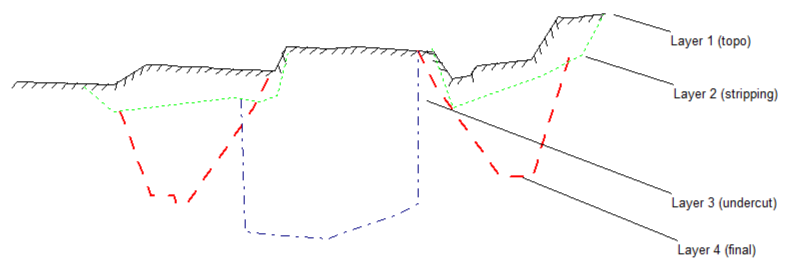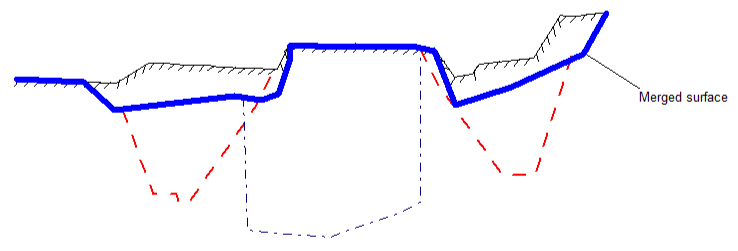Calculating As Built Volumes
Updated May 08, 2025
This article applies to:
- RoadEng Civil
- RoadEng Forestry
In the Location Module, cross section end areas (and therefore volumes) are calculated using a layer merging process which simulates the construction sequence. With fixed cross sections, you control the shape and order of the layers so it is important to understand this process.
-
Layer 2 is compared with layer 1 (usually topo) and the difference is calculated; this defines the cut and fill areas for layer 2 (in this case stripping).
-
Layers 1 and 2 are merged to create a new merged surface (in this case the stripped surface).
-
The merged surface replaces layer 1, layer 3 replaces layer 2 and the two steps above are repeated.
-
Repeat until all layers are processed.
The figure below shows the progression of the merged surface.
| Fixed cross-section |
 |
|---|---|
| Merged surface after Stripping is applied |
 |
| Merged surface after sub-cut is applied |
 |
| Merged surface after final is applied |
 |
Figure 1: Depiction of Merged Surface Progression
Note: The order of the layers in the Section Editor Tree-control is very important. Cut fill volumes are calculated between the current layer and the merged surface.